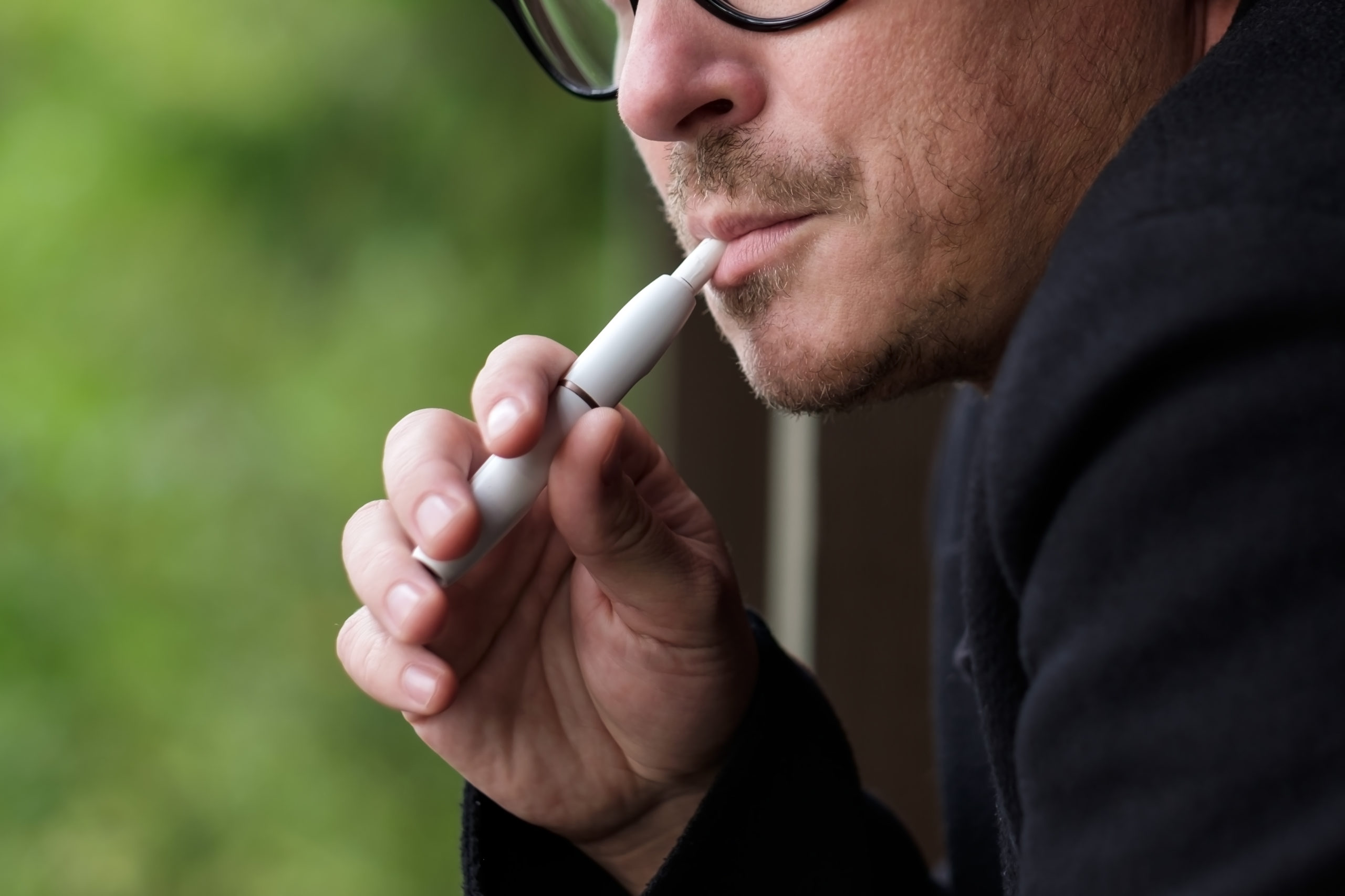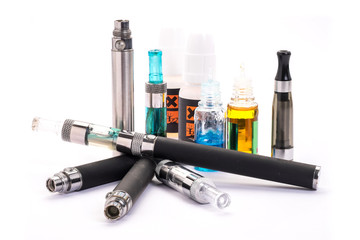What You Need To Know About Life Insurance for Smokeless Tobacco Users 2024
If you are searching for life insurance for smokeless tobacco, you’ve come to the right place!
Smokeless tobacco users are often overlooked in the realm of life insurance. With increased awareness around the dangers of smoking, many people have made a conscious decision to quit. Unfortunately, this doesn’t always translate into smokeless tobacco use cessation – and that could pose some serious health risks.
In addition to cancer, smokeless tobacco usage also increases your risk for cardiovascular disease and diabetes. It’s important for you to understand these potential side effects before making any decisions about your future with life insurance coverage!
Table of contents
- Smokeless Tobacco and Life Insurance Rates
- How Does the Insurance Carrier view Smokeless Tobacco Users
- How Does Smoking Cigarettes Affect My Life Insurance Rates
- Smokeless Tobacco Health Risks
- Kinds of Smokeless Tobacco
- Applying for Non-Smoker Rates for Smokeless Tobacco Users
- How to Apply To Get Life Insurance as a Chewing Tobacco User
- What is Cotinine
- FAQs
- Conclusion
Smokeless Tobacco and Life Insurance Rates
How does smoking affect you? Not only in health but in life insurance…
It’s important to know that most life insurance carriers will rate you as a smoker even if you only use smokeless tobacco.
Not only will using smokeless tobacco increase rates by 3 fold, but also you can’t ignore the health issues smokeless tobacco has on the body over time. We will focus on the carriers that will not rate you with a nicotine/tobacco rate.
But first…..
Again, smokeless tobacco can still cause an issue with finding a reasonable life insurance rate. In fact, insurance companies consider several factors before deciding whether or not they’d like to cover you. In addition, what rate they’ll cover you for.
Furthermore, bad habits can cause insurance companies to consider you as a high-risk individual; using smokeless tobacco can undoubtedly impact your life insurance premiums. People quit smoking daily, but live through what smoking or dipping caused even after quitting.
The toxic chemicals can cause cardiovascular disease, whether traditional cigarettes, electronic cigarettes. Our public health including heart disease is extremely prevalent in today’s world.
High-risk life insurance companies will want to know if you are a tobacco user. However, if you use smokeless tobacco, it is still possible to find reasonably priced life insurance.
In general, you will pay a higher premium due to the increased health risk that a tobacco product causes.
How Does the Insurance Carrier view Smokeless Tobacco Users
If you’re a smokeless tobacco user, you’ll want to find a company that does not view all types of tobacco users as the same.
Again, most carriers will put the consumer in the same category as cigarette smokers, which in return will cause the rate to double at best!
Instead, find an insurance company that has very lenient guidelines towards smokeless tobacco. We already know smokeless tobacco isn’t as harmful as smoking tobacco.
In fact, this is why we always recommend shopping around before picking a life insurance company. Finding an independent agent will guide the consumer to the best options.
How Does Smoking Cigarettes Affect My Life Insurance Rates
While you may be able to find many companies that are lenient about those that use smokeless tobacco, it’s going to be a lot harder for those that smoke cigarettes to get affordable life insurance, even a term life insurance policy.

In fact, they will likely have to pay rates more similar to people with serious medical conditions, such as type 1 or type 2 diabetes, sleep apnea disorder, or history of a heart attack.
In the event that you’re looking for more motivation to quit smoking, know that stopping 12 months before applying for life insurance can potentially cut the cost of your life insurance in half.
This is because many companies will offer you a standard life insurance rate if you’ve quit for a year. Some carriers will provide the preferred best rates after 3 years of stopped smoking and being tobacco-free.
However, if you choose not to quit, get ready to be labeled high risk by life insurance companies, and expect to be paying two to three times more than nonsmokers. Many, though, will prefer to save thousands of dollars on their life insurance.
We can also show you how to save over 50% with layering term policies. So if you are a tobacco chewer, your best bet is to shop to Prudential and Lincoln Financial.
Smokeless Tobacco Health Risks
For one thing, chewing tobacco outcomes are severe and can be from an array of health issues. In particular, chewing tobacco is closely associated with a number of major health complications, including oral cancer, higher blood pressure, gum disease, decreased sperm count, and erectile dysfunction.
- Cancer: Contains 28 cancer-causing agents. It’s a known cause of prostate cancer and increases the risk of developing oral cavity cancer.
- Oral Health: Associated with leukemia, a precancerous lesion in the mouth. Also related to tooth recession, gum disease, and decay.
- Reproductive Health: Increases the risks of preeclampsia, premature birth, and low birth weight during pregnancy. Men’s use can lead to reduced sperm count and abnormal sperm cells.
- Nicotine Addiction: Using smokeless tobacco can lead to nicotine addiction.
- Adolescents: Those who use smokeless tobacco are more likely to become cigarette smokers later on.
Smokeless Tobacco Use in the United States
Adult Smokeless Tobacco Product Use (State-Specific)
2018 Report
States with Highest Usage:
| State | Percentage of Users |
|---|---|
| Wyoming | nearly 9 in every 100 people (8.8%) |
| West Virginia | about 8 in every 100 people (8.3%) |
| Mississippi | about 7 in every 100 people (7.4%) |
| Kentucky | 7 in every 100 people (7.0%) |
States with Lowest Usage:
| State/Region | Percentage of Users |
|---|---|
| New Jersey | about 1 in every 100 people (1.4%) |
| District of Columbia | nearly 2 in every 100 people (1.7%) |
| Rhode Island, Connecticut, California | nearly 2 in every 100 people (1.8%) |
Adult Smokeless Product Tobacco Use (National)
Characteristics of Adults Who Currently Used Smokeless Tobacco in 2021
| Characteristics | Data |
|---|---|
| Overall Adult Usage | About 2 in every 100 (2.1%) adults aged 18 or older reported current use of smokeless tobacco products. This represents 5.2 million adults. |
| Male Usage | About 4 in every 100 (4.2%) men currently used smokeless tobacco. |
| Female Usage | Less than 1 in every 100 (0.2%) women currently used smokeless tobacco. |
| Racial/Ethnic Groups | Among racial/ethnic groups, non-Hispanic White adults had the highest prevalence of smokeless tobacco use. Nearly 3 of every 100 (2.9%) non-Hispanic White adults currently used smokeless tobacco. |
Smokeless Tobacco Product Use Among High School Students
High School Students in 2023
Current Use of Smokeless Tobacco
| Category | Percentage |
|---|---|
| Overall | 1.6% |
| Males | 2.3% |
| Females | 0.9% |
| White non-Hispanic | 2.2% |
| Hispanic | 1.3% |
These statistics can be found on CDC website by clicking here, CDC Smokeless Tobacco.
Keep in mind, smokeless tobacco contains heavy metals such as lead, cadmium, arsenic, copper, mercury, and selenium. These can be toxic just like regular cigarettes.
Kinds of Smokeless Tobacco
Many different types of smokeless tobacco consumption are in the mouth. Most life insurance carriers will consider you a tobacco user if you test positive for nicotine on an exam. But as long as an admission on the application we know the ones that won’t!
These are some of the more common ones:
Moist snuff consumption is by placing it between the lower lip or cheek and gum. The nicotine absorption is in the tissues of the mouth. Moist snuff also comes in little, tea bag-like pouches or sachets. Placement is between the cheek and gum. These are intended to be both “smoke-free” and “spit-free” and marketed as a discreet way to make use of tobacco.
Dry snuff is sold in a powdered form and is used by sniffing or inhaling the powder up the nose.
Keep in mind…
Tobacco companies have created flavored, dis-solvable kinds of tobacco. These are available as tobacco lozenges, orbs, or pellets; strips (like melt-away breath strips); and toothpick-sized sticks.
Some of them also contain chocolate or sweeteners and seem a good deal like candy. All have tobacco and nicotine. Based on the kind, they’re held in the mouth, chewed, or sucked till they dissolve. The juices are eventually swallowed
Is vaping better than smoking?
I would say no. You may not smell like cigarette smoke, but your health will suffer! The negative side effects of vaping are as follows:
- Thirst increase causing dehydration
- Bloodshot eyes
- Develop nosebleeds
- Smokers cough
It is not as harmful as conventional cigarettes however, it contains propylene glycol (this is what causes the nosebleeds, it dries out the inside of your nose.) In addition, it also includes diacetyl also known as “popcorn lung”.
Applying for Non-Smoker Rates for Smokeless Tobacco Users
Working with an independent life insurance broker such as PinnacleQuote Life Insurance Specialists can secure a life insurance plan that is non-smoker should you think about tobacco. Life insurance providers will know the niches and are contracted with life insurance companies. Best Quote Life Insurance will be certain you’re applying with the tobacco life insurance policy coverage, as there are just a life insurance companies which will consider prices for smokeless tobacco.
The Honest Reality About Chewing Tobacco
- One can of snuff has as much nicotine as 3 packs of cigarettes
- Reports suggest that smokeless tobacco is always harder to stop than cigarettes
- Long-term smokeless tobacco users are almost 50 percent more likely to be diagnosed with oral cancer than non-users
How to Apply To Get Life Insurance as a Chewing Tobacco User
Now to the nitty-gritty! For instance, there are a few life insurance carriers that are lenient to the occasional cigar, a dip of chewing tobacco, vaping or nicotine gum. Although any form of tobacco use poses a health risk. Smokeless tobacco inst as risky as heavy smokers or people who chew frequently.
A number of the life insurance providers allow tobacco usage provided that you do not test positive for nicotine. There are insurance companies that will provide rates that are a non-smoker to you if you test positive for smoking but do not smoke cigarettes.
It’s important to admit your tobacco use. Most cases you will have to take blood tests that will detect nicotine. Some carriers will require a saliva test.
Again, it is always best to just admit what you do because of the types of nicotine tests the carrier can ask you to take. The last thing you want to have happened is the insurance carrier contest the death benefit because you lied on the application.
When the paramedical is done, life insurance carriers will test for nicotine and cotinine. Cotinine is the chemical your body discreet’s when nicotine is present in the body. This will give a good idea the amount of nicotine and the period of time of the last tobacco use.
The way to locate these life insurers that are lenient is to operate with an agent. An area member agent will be able to help you evaluate options for life insurance policy coverage, even when you regularly chew tobacco.
Prudential Life Insurance Smokeless Tobacco
If you are chewing tobacco and life insurance is in your future then you will want to consider Prudential as your go-to carriers.
Although they will have the applicant take a tobacco test for insurance, as long as you admit it then you will get among the best rates even though the test results were positive.
Another carrier to look at is Lincoln Financial group. They only consider tobacco rates if you smoke cigarettes or use e-cigs. LFG will also come in with better rates on the 10 year and 20-year term rates.
How Does the Life Insurance Company Know I Have Nicotine in my System
first and foremost, always be honest on a life insurance application, PERIOD!
You may need to undergo a medical exam to qualify when you look into purchasing life insurance. As part of that examination, you might be subject to the life insurance company testing you for nicotine.
Smoking will increase the rate significantly. In fact, consideration of insurance will increase life insurance rates 2-3 times.
Above all, this is why smoking or cotinine test should be anticipated for people who have admitted to smoking and suspected of currently being a smoker. You have to do it anyway if a smoking test is asked for by insurance.
Again, there are many ways that life insurance carriers will detect nicotine and cotinine. Here are the types of nicotine tests:
- Hair Test
- Blood Tests
- Saliva Tests
- Medical Exam
- Medical Record History
These are just a few ways carriers will find out. I cannot stress it enough! JUST BE HONEST!
What is Cotinine
Above all, cotinine is a chemical that the body discrete’s when nicotine is present in the body. In addition, it’s the nicotine test for life insurance chewing tobacco and other tobacco product.
Furthermore, cotinine is associated with nicotine and used to detect if the person is a smoker. Cotinine is used in place of nicotine as it’s relatively easy to identify and isn’t quite as simple to flush out of your system.
The cotinine urine test for life insurance is the most typical since the substance can be detected in this manner.
But some insurance companies may request blood or hair test to spot the content.
For example, blood or hair test will be insisted if there is some doubt from the insurance company about your claims. This happening is very very rare!! Again, it is always best to just admit!
It’ll be present in the hair for a substantial length of time, while cotinine does stay in the bloodstream a little longer as compared to a urine test.
Why Insurance Companies use the Cotinine Test
There are lots of reasons why insurance businesses prefer this type of evaluation. Therefore, beginning with the simple fact it may detect the usage of tobacco and smoke and oral marijuana products in different forms.
FAQs
Smokeless tobacco use typically includes products like chewing tobacco, snuff, snus, and dissolvable tobacco. Insurers will categorize users of these products as tobacco users.
Some insurance companies may offer non-smoker rates to smokeless tobacco users, but this varies significantly between companies. It often depends on the frequency of use and the insurer’s policies.
Both term and whole life insurance policies are available. The best choice depends on the individual’s coverage needs, health status, and financial goals.
A medical exam is usually required, especially for traditional policies. The exam will likely include tests to detect nicotine or cotinine in the body.
Compare different insurance providers and look for those with more lenient policies toward smokeless tobacco use. Demonstrating good overall health can also help.
Rates can decrease if you quit using smokeless tobacco. Insurers typically require a certain period of tobacco-free behavior (usually 1-2 years) before offering non-smoker rates.
If you start using smokeless tobacco after your policy is in effect, it’s important to notify your insurer. Your policy may be reevaluated, and premiums could increase.
While there aren’t specific riders for smokeless tobacco users, standard policy riders like accidental death benefit or waiver of premium are generally available.
It’s uncommon for smokeless tobacco use alone to lead to outright policy denial, but it can lead to higher premiums or limited policy options.
Related Articles
Conclusion
If you’re a smokeless tobacco user, it’s important to know that most life insurance carriers will rate you as a smoker even if you only use smokeless tobacco. This means your rates are likely going to be more than those of regular smokers – and they’ll never go down with time! But don’t worry; we can help get the right coverage for you at an affordable price. Let us do all the work for you by getting in touch today so one of our friendly experts can review your options with no obligation on your end. You deserve the peace of mind knowing that not only is there LIFE INSURANCE FOR SMOKELESS TOBACCO USERS but also some great discounts too!
More Life Insurance Resources



